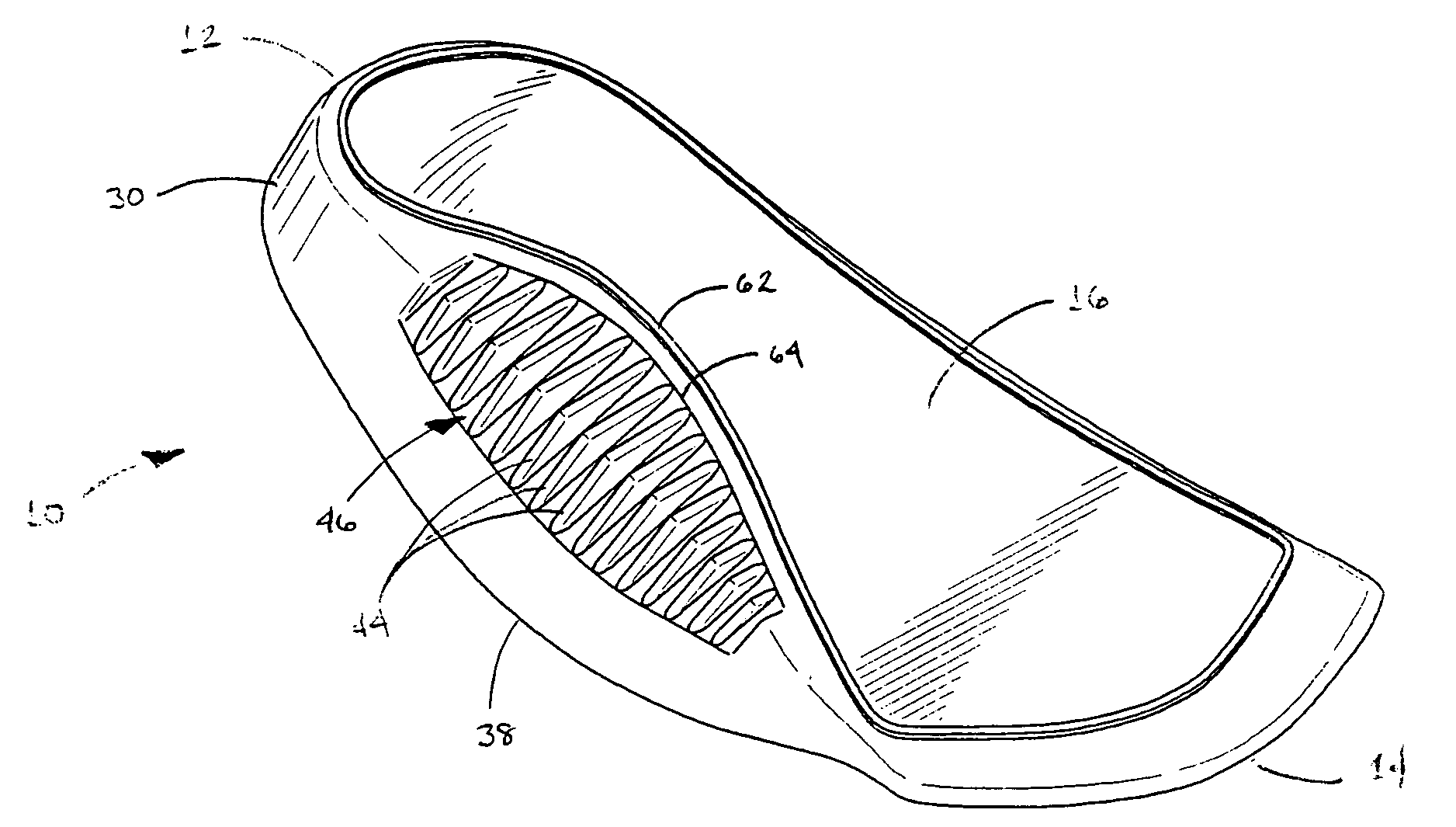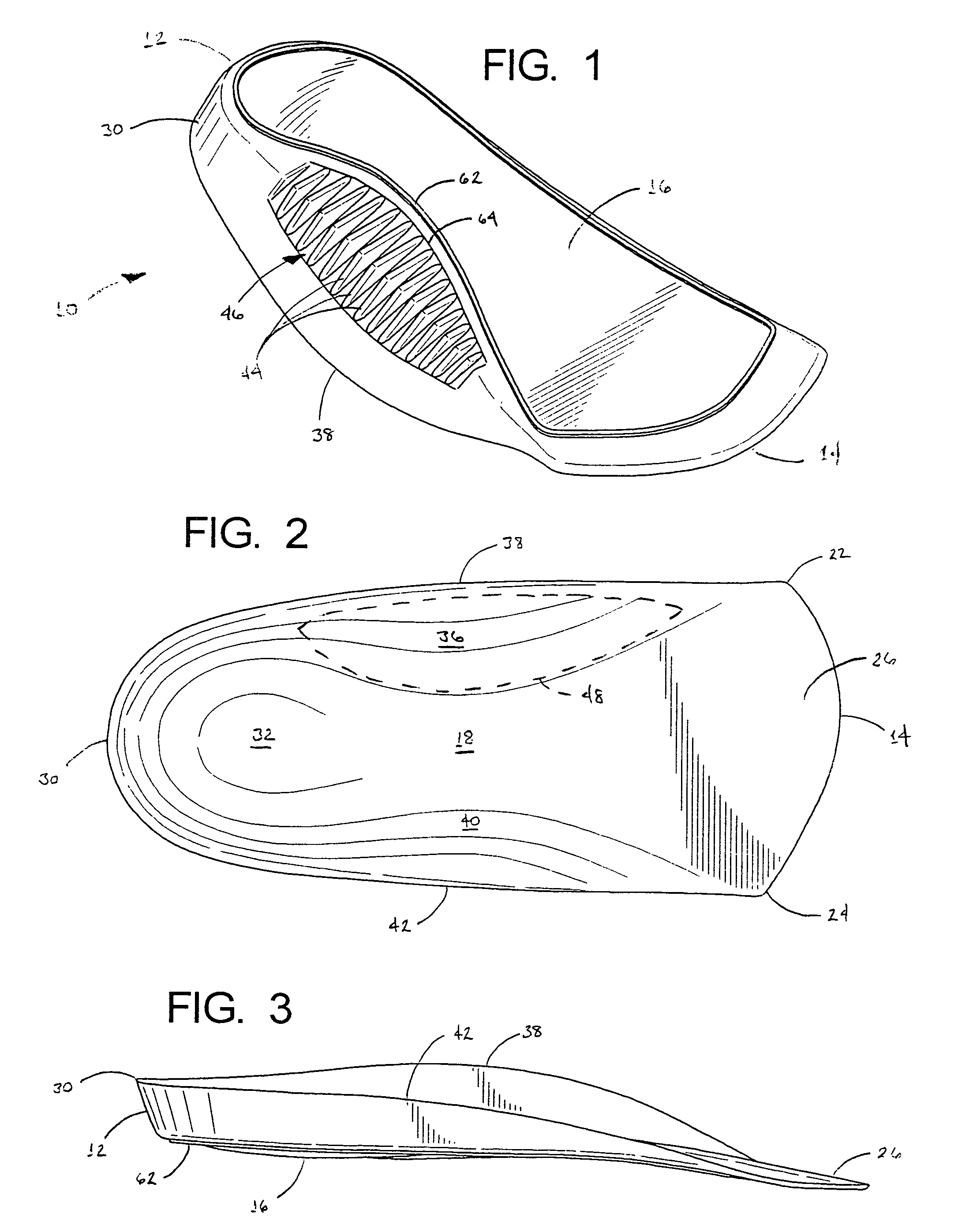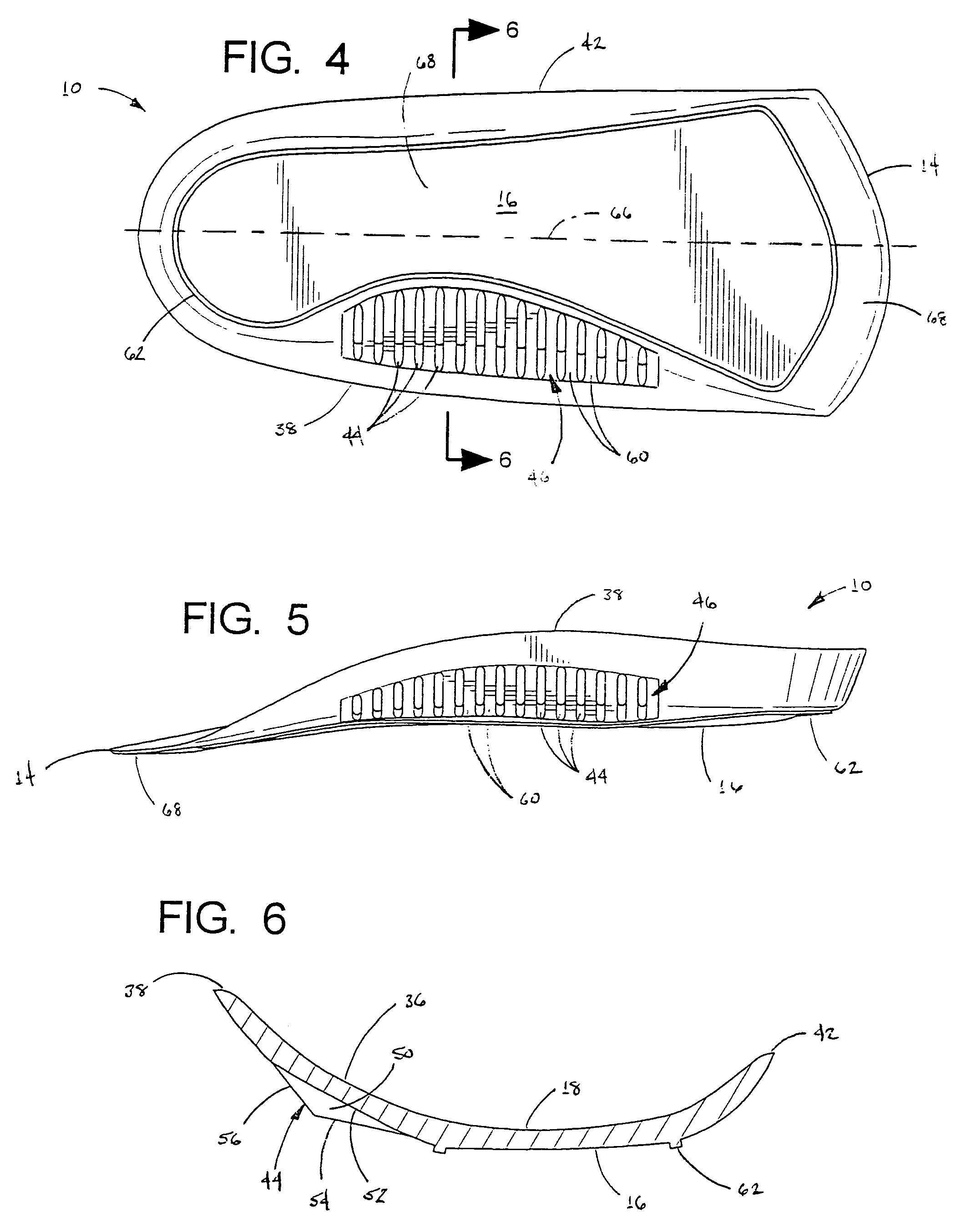Molded orthotic insert
a technology for orthotics and inserts, which is applied in the direction of uppers, bootlegs, stiffners, etc., can solve the problems of inevitably compromising the control of affecting the effect of the foot, and causing the difficulty of soft foam orthotics to exert the requisite degree of control over the motion of the foo
- Summary
- Abstract
- Description
- Claims
- Application Information
AI Technical Summary
Benefits of technology
Problems solved by technology
Method used
Image
Examples
Embodiment Construction
[0025]The present invention is a one-piece orthotic insert that provides significant advantages in terms of both function and in the manner in which it is manufactured. More specifically, the present invention provides an orthotic insert that not only effectively controls and directs the motions of the foot, but which can also be manufactured inexpensively using conventional injection molding processes.
[0026]As can be seen in FIG. 1, the molded orthotic insert 10 of the present invention is a one-piece, unitary structure. As will be described in greater detail below, the insert 10 is formed of an injection-molded plastic that is substantially rigid but somewhat resiliently flexible when in its cured form. In some embodiments, a thin top cover (e.g., cloth) or other layer may be added, but in the illustrated embodiment the upper surface of the insert itself is formed with a slight pebble finish or other texturing that is both comfortable and prevents the device from feeling slippery ...
PUM
 Login to View More
Login to View More Abstract
Description
Claims
Application Information
 Login to View More
Login to View More - R&D
- Intellectual Property
- Life Sciences
- Materials
- Tech Scout
- Unparalleled Data Quality
- Higher Quality Content
- 60% Fewer Hallucinations
Browse by: Latest US Patents, China's latest patents, Technical Efficacy Thesaurus, Application Domain, Technology Topic, Popular Technical Reports.
© 2025 PatSnap. All rights reserved.Legal|Privacy policy|Modern Slavery Act Transparency Statement|Sitemap|About US| Contact US: help@patsnap.com



